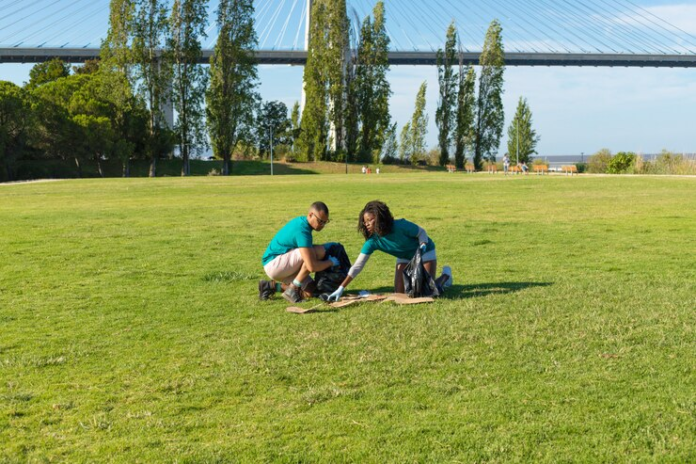Establishment and maintenance of artificial grass is becoming more and more popular as a way to preserve beautiful green areas in public parks between local authorities and urban planners. Natural grass can quickly deteriorate due to pachi, mud or increased bent traffic, irregular weather patterns and increase care expenses. A reasonable alternative is an artificial peat, which provides a continuous juicy leaf group without constant grass cutting or water requirement. Due to its ability to maintain beauty appeal throughout the year, the installation of artificial grass in popularity increases, especially in areas such as Miami.
Why Park Authorities Are Increasing Their Adoption of Artificial Turf Miami
Installations of artificial turf in Miami have grown in popularity due to their climate-adaptability. Natural grass generally deteriorates quickly due to extreme heat, strong rains, and salty air. Installations of artificial turf in Miami offer a durable surface that is resistant to these environmental conditions. Artificial grass also saves water, which is important in a situation where there is often drought and lack of water. These benefits help explain why it becomes more and more popular in Miami’s public parks, playgrounds and holiday places.
Artificial grass installation procedures and placements in public parks
To guarantee long life and safety, many important procedures are needed to install artificial grass in public parks. Originally, the ground is leveled out, the old grass is removed, and a base layer – usually made of sand or crushed stone for drainage – is added. Artificial grass is excluded and fasted, and adds filler materials such as sand or rubber cells to offer stability and cushioning. In order to create the surface of a park that is comfortable for both guests and prolonged, this installation process is necessary. The durability and drainage performance of artificial grass depends largely on how accurate it is established.
Environmental effects: Benefits and deficiencies in the art -sized miami
Although artificial grass in Miami protects water and eliminates the requirement for fertilizers or pesticides, synthetic places have environmental deficiencies. Artificial grass restricts homes for insects and other tiny creatures in public parks since it doesn’t support natural ecosystems the way soil and plants do. Furthermore, artificial turf is usually made of plastic-based materials, which raises concerns about sustainability and disposal at the end of the turf’s life cycle. To lessen the environmental impact of artificial turf Miami installations, numerous producers are pursuing eco-friendly solutions, including recyclable materials and infills composed of natural resources.
Benefits of Artificial Grass and Installation in Terms of Cost and Maintenance
From a financial standpoint, park managers and municipalities may save money over time by installing artificial grass. Although the initial outlay may be greater than that of planting or sodding natural grass, there are significant savings on continuing care expenses, including mowing, watering, fertilizing, and controlling pests. Additionally, artificial turf removes the need to restore exposed areas brought on by weather damage or heavy use. Artificial grass is a cost-effective solution for crowded public parks because maintenance just requires clearing debris and the occasional brushing to maintain the fibers straight.
User Experience: Miami Artificial Turf Surfaces Offer Comfort and Safety
Park visitors frequently appreciate the uniform and tidy appearance of the playing fields and leisure spaces to parks with artificial turf Miami installations. Artificial turf lowers the chance of injuries brought on by uneven or slick natural grass by offering kids and athletes a safe, soft, and level surface. Unlike muddy natural fields, the turf dries fast after rain, reducing park use downtime. Artificial turf’s general dependability and comfort enhance Miami’s outdoor areas for the general population.
Future Developments in Artificial Grass and Park Installation
Artificial grass and installation techniques keep becoming better as technology develops, providing more realistic textures and improved environmental performance. Cooling fibers to lessen heat absorption, antimicrobial coatings to stop odors, and improved drainage systems to manage heavy rains are examples of innovations. As these advancements make synthetic grass more enticing and sustainable, artificial turf use is anticipated to rise in cities like Miami, which have a warm climate and a high demand for recreational spaces.
Conclusion
Miami’s artificial turf offers lush, green public parks with less water and upkeep, striking a sensible balance between beauty and environmental concerns. The installation and maintenance of artificial grass guarantees that these areas are usable and welcoming all year long. Even if there are trade-offs for the environment, new developments and environmentally friendly alternatives are making artificial turf a sustainable solution for urban settings. Visit monstergrass-southflorida.com for more thorough details about artificial turf and installation alternatives in Miami.

